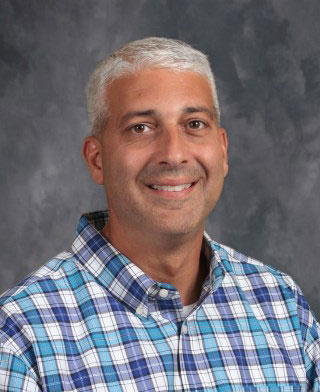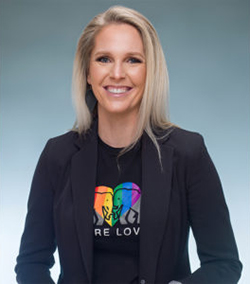All Districts —After more than a year spent teaching and learning during a pandemic, Michigan educators are now focused on student recovery and have a state blueprint to use as a guide.
While some communities fared better than others in both the number of COVID-19 deaths and the virus’ ancillary impacts, there’s been an overall decline in student learning and mental and physical health. There has also been an increase in students who have completely disengaged from school, plus greater disconnection between parents and schools.
To address these issues, several West Michigan educators contributed to the MI Blueprint for Comprehensive Student Recovery, recently released by Gov. Gretchen Whitmer and state education leaders. Godfrey-Lee Public Schools Superintendent Kevin Polston, who is transitioning into the role of Kentwood Public Schools superintendent, is chairperson of the Student Recovery Advisory Council of Michigan.
Michigan schools face multi-fold challenges
• Students learned about one-third less in reading than they would in an average year, and one-half to two-thirds less in math.
• Test-score declines among Black students were nearly 50 percent larger than those of their white peers.
• Fall 2020 college enrollment dropped 4.4 percent, more than five times the decrease in 2019.
• Child abuse and neglect, domestic violence and solitary substance use among adolescents have all increased.
Source: MI Blueprint for Comprehensive Student Recovery
The blueprint, which is evidence-based and tailor-made for Michigan, can help the state’s 800 public and charter districts move forward and best utilize the historic investment of federal funds allocated for education, Polston said.
“Without question, we know kids had disruption in learning throughout the pandemic,” he said. “We know there is unfinished teaching and learning.”

The plan also identifies and focuses on improving education issues that have long needed change, he said.
“For us to recover means we can’t go back to pre-pandemic conditions that were not serving every child well. The conditions are ripe to really think bold about a brighter future for the students of Michigan.”
Key Areas of Focus
The blueprint serves as a guide for districts to align with their community’s needs. Educators are encouraged to review it through the lens of local challenges and prioritize their most critical challenge. Nothing is mandatory.
The report sets goals in key areas:
Wellness: Food, dental, vision, physical education and other services have fallen behind. Priorities are for universal student mental health screenings, school nurses, professional development and physical education opportunities. Staff and educator burnout, low job satisfaction and high staff turnover are results of stress, anxiety, depression and/or grief. Promoting wellness and self-care is key.
Academics: The impact on student learning varies from minimal to complete disengagement. General education students may have gaps in their learning. Students with greater academic needs may need a “double-dose” of academic courses and chances to make up ground. For students who have fully disengaged, priorities include a return to pre-pandemic attendance policies and clear definitions for recording absenteeism and attendance.
School climate: The pandemic exacerbated inequities and reinforced barriers to educational opportunity for students of color and other marginalized populations. Goals are to create climates of inclusivity, belonging and safety by way of district-wide surveys, equity work, professional development and restorative justice practices.
Family and community engagement: Strained school/district/community relationships have created the need to restore and build trust. Communication including ways for parents to support their child’s education is key. All parent communities must be represented in decision-making.
Post-secondary consideration: Enrollment has decreased significantly in higher-education institutions. There is a need for more individualized advising beginning in ninth grade and for more school counselors and college advisors. High-school-to-college pathways ensure students have access to credit-bearing coursework, early college credit and dual enrollment.

Kent County Contributions: Academics
Wyoming Junior High School English teacher Shantel VanderGalien, the Region 3 Michigan Teacher of the Year, contributed to the academics portion of the blueprint. She specifically focused on accelerated learning (to help students close gaps due to the school closure) and unfinished learning.
“The research that stood out to me most was (the benefit of) high-dosage tutoring — three to four days a week — for students most behind,” she said.
VanderGalien put the idea for increased tutoring sessions to the test this spring. Grand Valley State University students worked with her ninth-grade English students virtually over six weeks during the fourth quarter.
“It was super-helpful to have a point person to work one-on-one or with two students,” she said. Her students caught up on material, and she’s tracking that data. “A goal moving forward would be to establish more of a global (tutoring) program for Wyoming Junior High — not just my students.”
VanderGalien is also interested in focused instruction, as recommended in the blueprint, which prioritizes content that connects to several subjects and can be built upon from grade to grade rather than playing catch-up on all material. She sees the need for “double-dose” academic courses, also recommended in the plan, as well. Students struggling with math would have two hours of algebra in their daily schedule, for example.

Kent County Contributions: Higher Education
In the area of higher-education goals, Grand Rapids Community College President Bill Pink served on the Advisory Council and was co-chair of a subcommittee focused on post-secondary-education recommendations. This group discussed not only the impacts of the pandemic on post-secondary enrollment, but also the long-standing barriers to college or attaining post-secondary credentials.
“We wanted to make sure we had called out things that would ensure that transition (from high school to post-secondary) would be solid, and that the state would focus on those things,” Pink said.
The blueprint’s goals in this area include ensuring all students know how to fill out the Free Application for Federal Student Aid, have access to financial aid and are given information about opportunities and jobs for which credentials and college can prepare them.
Since students have spent a large chunk of time since March 2020 in virtual instruction, many could benefit from college-prep “summer bridge programs” to close gaps in reading, writing and math. With this in mind, GRCC is offering Bridges to College – Raider Ready, a free summer program to help graduating high school seniors prepare for college. Pink said their focus is on the classes of 2021 and 2020, with outreach efforts ongoing to reach both groups.
An important fact in moving ahead, Pink said, is that the pandemic has provided the chance to look at practices that will benefit from long-term change. One is the need to “strike a better balance” by offering both in-person and virtual courses.
“What are things we keep? What are the lessons learned that were made obvious to us that we need to better improve and correct? We need to learn the lessons (the virus) taught us,” he said.

Kent County Contributions: Family/Community Engagement
Carol Paine-McGovern, executive director of Kent School Services Network, worked with a committee on family and community engagement for the state blueprint. KSSN works in partnership with Kent County schools to connect families with resources.
“Part of the work was really looking at how to engage families and the community post-COVID, and also moving forward and building authentic relationships,” she said.
Throughout the pandemic, she said connecting with families has been difficult, even with Zoom, text and email.
“The challenge is, families are still not able to go into schools,” she said. “Not being physically able to go into schools has been a barrier… Everyone is excited for next year, to have families back in the building.”
The pandemic also exacerbated the need to address food insecurity and other basic needs in communities, said Paine-McGovern. The blueprint looks at root causes rather than short-term fixes for this. It also addresses the need for school/community partnerships in order for these basic needs to be met so that students can thrive academically.
Throughout the blueprint, its focus on equity and disparities faced by people of color is key, and engaging their voices is also key, she said.
“We have to listen to the voices of students and families. We can’t speak for them.”
Aligning Policy with Goals
The blueprint also outlines policy recommendations for the state legislature to consider to help meet goals, including changing the state’s school funding formula to better address gaps. This goal aligns with recommendations by the School Finance Research Collaborative which establishes a base amount for each student, with weights for students with additional needs.
The plan’s other policy recommendations to the legislature include:
- A seat-time waiver to allow districts flexibility in instructional delivery options, since some families will want their children to continue learning remotely.
- Measures to recruit and retain top talent, with focus on educators of color, through financial incentives for teachers to stay in the profession and encourage them to work in the most impoverished communities.
- Measures to create conditions for innovation in teaching and learning, to encourage the development of new learning models focused less on compliance enforcement and more on innovative, student-centered learning programs in schools and systems
- Universal preschool for all children ages 3 and 4, and making all students eligible for free preschool regardless of income.









